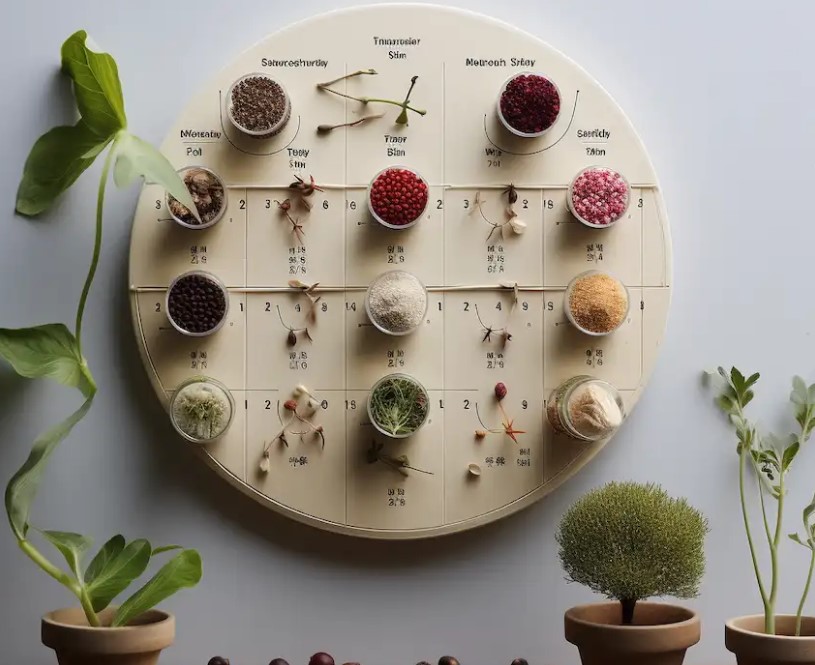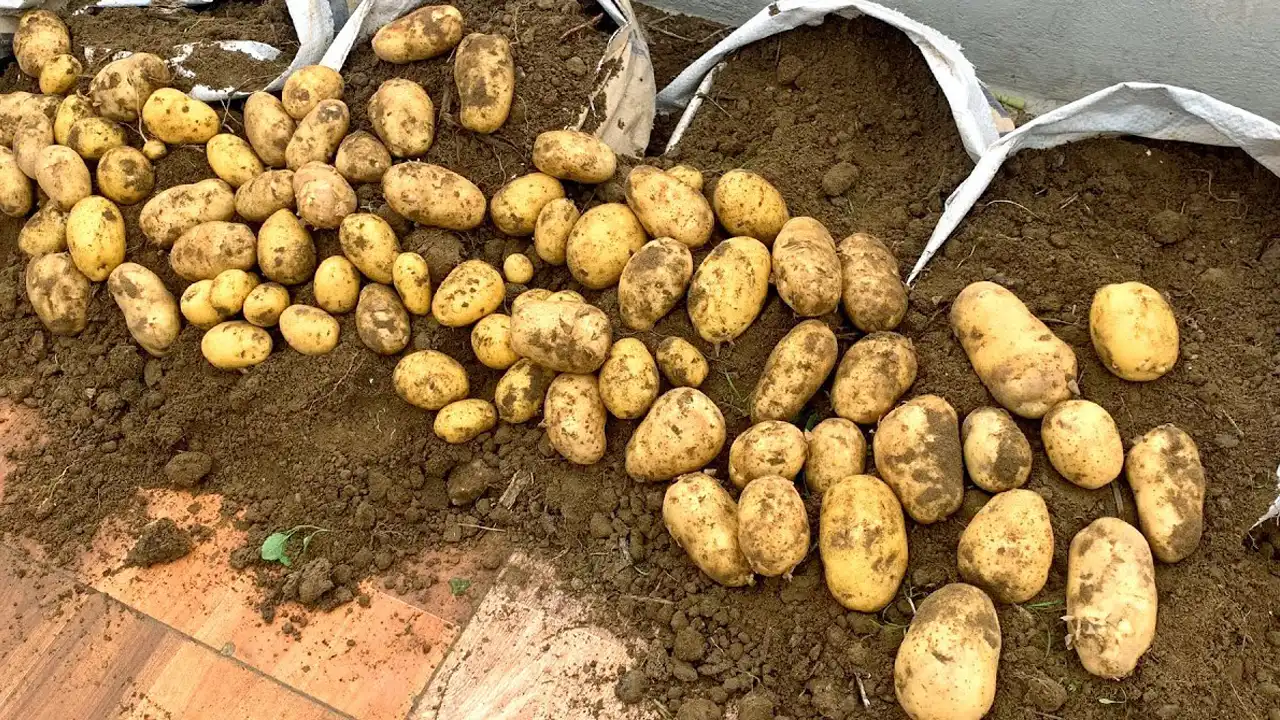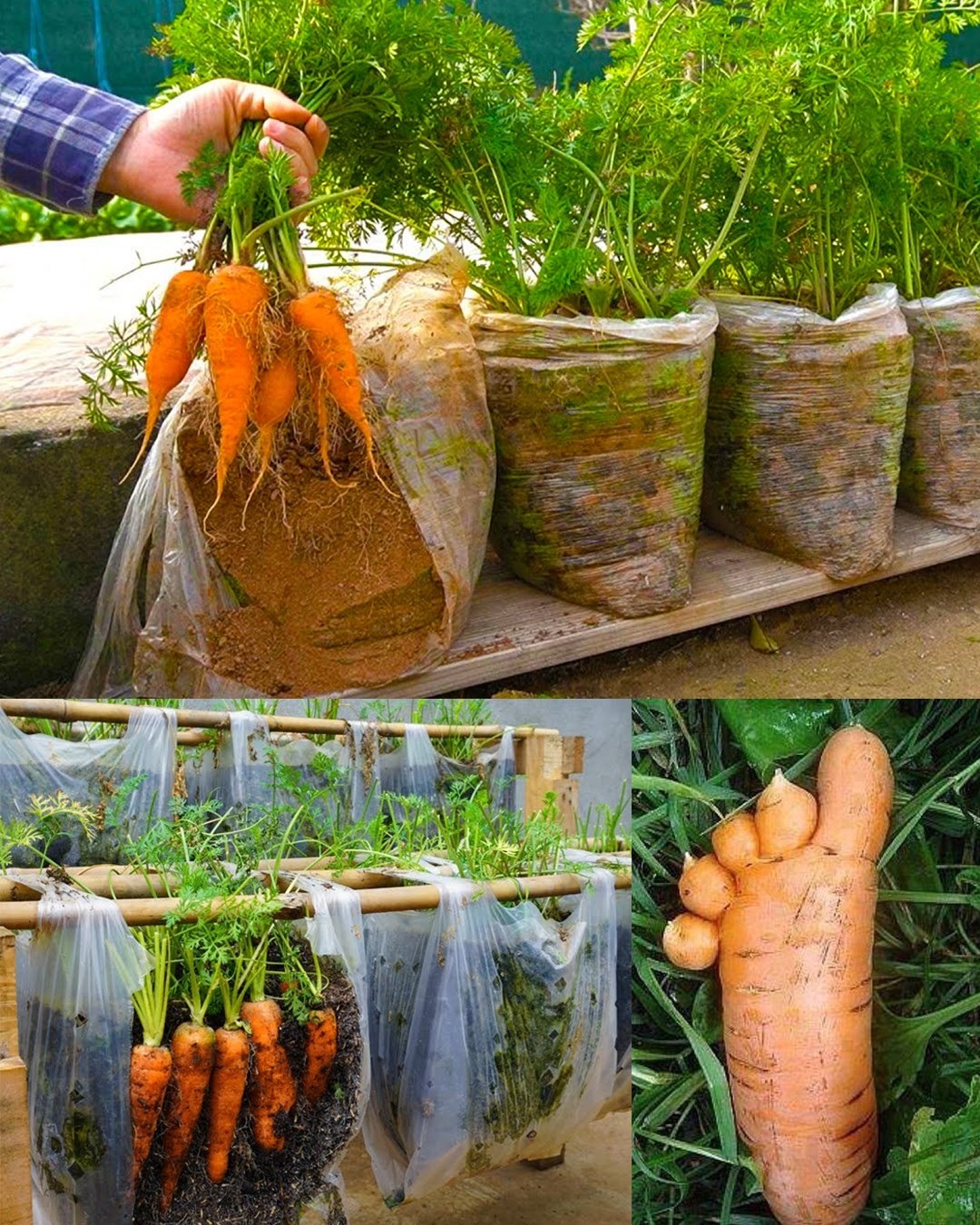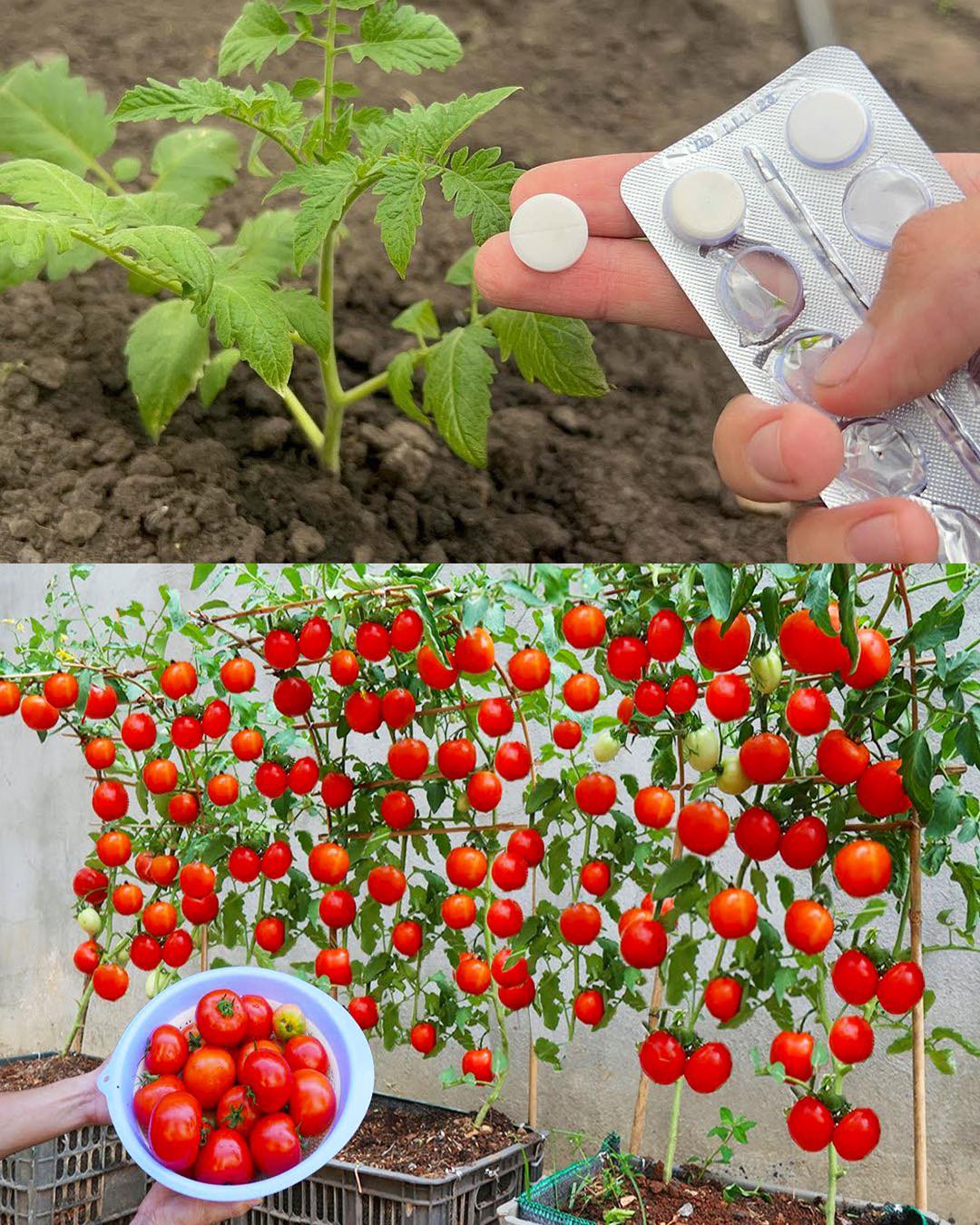Embarking on a gardening project can be a deeply rewarding experience, but it requires careful planning and knowledge about when to start your seeds. The United States is divided into various hardiness zones, each with its specific climate conditions, affecting how and when you should plant your seeds. This comprehensive guide will provide a seed starting calendar for 20+ vegetables, tailored to each zone, to ensure your gardening project flourishes.

Understanding Hardiness Zones
The USDA Hardiness Zone Map divides North America into 13 zones based on the average annual minimum winter temperature. Each zone is 10°F warmer (or colder) in an average winter than the adjacent zone. Knowing your zone is crucial as it determines the local climate conditions and helps you understand the best planting times for your seeds.
General Tips Before You Start
- Check Your Zone: Know your region’s hardiness zone to follow the correct schedule.
- Quality Seeds: Purchase high-quality seeds from a reputable source to ensure a good germination rate.
- Seed Starting Mix: Use a light, well-draining soil mix, specifically designed for seed starting.
- Proper Containers: Ensure your containers have good drainage and are clean to prevent diseases.
- Adequate Light: Seedlings need a lot of light; if you’re growing indoors, consider a grow light.
- Keep Track: Label your seeds and keep a gardening journal to track their progress.
Seed Starting Calendar for Each Zone
Below are seed starting calendars for Zones 3 to 10. Each table lists over 20 vegetables, when to start them indoors, and the ideal time to transplant them outdoors.
Zone 3 Seed Starting Calendar
In Zone 3, the growing season is short and the risk of frost is high well into the spring. It’s important to start most of your seeds indoors to give your plants enough time to mature before the first frost in the fall. Here is a detailed seed starting calendar for over 20 vegetables suitable for Zone 3:
| Plant | Start Indoors | Transplant Outdoors |
|---|---|---|
| Tomatoes | Early March | Late May to early June |
| Peppers | Early March | Late May to early June |
| Eggplant | Early March | Late May to early June |
| Broccoli | Early March | Late May |
| Cauliflower | Early March | Late May |
| Kale | Early March | Late May |
| Cabbage | Mid-March | Late May |
| Brussel Sprouts | Mid-March | Late May |
| Lettuce | Mid-March | Late May |
| Spinach | Mid-March | Late May |
| Swiss Chard | Mid-March | Late May |
| Collards | Mid-March | Late May |
| Cucumbers | Mid-April | Early June |
| Squash (Summer) | Mid-April | Early June |
| Squash (Winter) | Mid-April | Early June |
| Pumpkins | Mid-April | Early June |
| Melons | Mid-April | Early June |
| Zucchini | Mid-April | Early June |
| Onions (from seed) | Early March | Late May |
| Leeks | Early March | Late May |
| Parsnips | (Direct sow outdoors) | Early to mid-April |
| Carrots | (Direct sow outdoors) | Early to mid-April |
| Beets | (Direct sow outdoors) | Early to mid-April |
| Radishes | (Direct sow outdoors) | Early to mid-April |
| Peas | (Direct sow outdoors) | As soon as the soil can be worked |
Note: The dates are approximate and can vary based on specific local weather conditions. It’s always a good idea to check the last frost date in your area and adjust your planting schedule accordingly. For crops sown directly outdoors, ensure the soil is workable and not too cold or waterlogged.
Remember, the key to a successful garden in Zone 3 is starting your seeds early indoors and protecting your seedlings from the last spring frosts. Happy gardening!
Zone 4 Seed Starting Calendar
Zone 4 has a slightly longer growing season than Zone 3, but gardeners still face the challenge of a short warm period and the possibility of late spring frosts. Starting seeds indoors is essential for many vegetables to ensure they mature before the first fall frost. Here’s a seed starting calendar for over 20 vegetables ideal for Zone 4:
| Plant | Start Indoors | Transplant Outdoors |
|---|---|---|
| Tomatoes | Mid-March | Early to mid-June |
| Peppers | Mid-March | Early to mid-June |
| Eggplant | Mid-March | Early to mid-June |
| Broccoli | Mid to late March | Late May to early June |
| Cauliflower | Mid to late March | Late May to early June |
| Kale | Mid to late March | Late May to early June |
| Cabbage | Late March | Late May to early June |
| Brussel Sprouts | Late March | Late May to early June |
| Lettuce | Late March | Late May to early June |
| Spinach | Late March | Late May to early June |
| Swiss Chard | Late March | Late May to early June |
| Collards | Late March | Late May to early June |
| Cucumbers | Late April | Early to mid-June |
| Squash (Summer) | Late April | Early to mid-June |
| Squash (Winter) | Late April | Early to mid-June |
| Pumpkins | Late April | Early to mid-June |
| Melons | Late April | Early to mid-June |
| Zucchini | Late April | Early to mid-June |
| Onions (from seed) | Mid-March | Late May to early June |
| Leeks | Mid-March | Late May to early June |
| Parsnips | (Direct sow outdoors) | Late April to early May |
| Carrots | (Direct sow outdoors) | Late April to early May |
| Beets | (Direct sow outdoors) | Late April to early May |
| Radishes | (Direct sow outdoors) | Late April to early May |
| Peas | (Direct sow outdoors) | As soon as the soil can be worked |
Note: The dates are approximate and can vary based on specific local weather conditions. Check the last frost date in your area and adjust your planting schedule accordingly. For crops sown directly outdoors, ensure the soil is workable and not too cold or waterlogged.
In Zone 4, taking advantage of the entire growing season is crucial. By starting your seeds indoors and preparing for the last spring frosts, you can maximize your harvest. Happy planting!
Zone 5 Seed Starting Calendar
In Zone 5, gardeners enjoy a more moderate growing season, allowing for a wide range of vegetables to be grown. However, starting seeds indoors is still a critical step for many plants, especially those that need a longer season to mature. Below is a seed starting calendar for over 20 vegetables suitable for Zone 5:
| Plant | Start Indoors | Transplant Outdoors |
|---|---|---|
| Tomatoes | Early March | Late May |
| Peppers | Early March | Late May |
| Eggplant | Early March | Late May |
| Broccoli | Early to Mid-March | Late May |
| Cauliflower | Early to Mid-March | Late May |
| Kale | Early to Mid-March | Late May |
| Cabbage | Mid-March | Late May |
| Brussel Sprouts | Mid-March | Late May |
| Lettuce | Mid-March | Late May |
| Spinach | Mid-March | Late May |
| Swiss Chard | Mid-March | Late May |
| Collards | Mid-March | Late May |
| Cucumbers | Early April | Early to mid-June |
| Squash (Summer) | Early April | Early to mid-June |
| Squash (Winter) | Early April | Early to mid-June |
| Pumpkins | Early April | Early to mid-June |
| Melons | Early April | Early to mid-June |
| Zucchini | Early April | Early to mid-June |
| Onions (from seed) | Early March | Late May |
| Leeks | Early March | Late May |
| Parsnips | (Direct sow outdoors) | Late April |
| Carrots | (Direct sow outdoors) | Late April |
| Beets | (Direct sow outdoors) | Late April |
| Radishes | (Direct sow outdoors) | Late April |
| Peas | (Direct sow outdoors) | As soon as the soil can be worked |
Note: The dates are approximate and can vary based on specific local weather conditions. Check the last frost date in your area and adjust your planting schedule accordingly. For crops sown directly outdoors, ensure the soil is workable and not too cold or waterlogged.
Zone 5 offers a more generous growing season, but taking advantage of the warmth is still crucial for a successful harvest. By starting your seeds indoors for warmth-loving plants and preparing the soil for direct sowing, you can ensure a bountiful and diverse garden. Happy gardening!
Zone 6 Seed Starting Calendar
Zone 6 gardeners benefit from a longer growing season compared to Zones 3-5, providing more flexibility for planting a variety of vegetables. Starting seeds indoors is still beneficial for certain crops, particularly those that prefer warm conditions or have a longer maturation period. Here’s a seed starting calendar for over 20 vegetables ideal for Zone 6:
| Plant | Start Indoors | Transplant Outdoors |
|---|---|---|
| Tomatoes | Late February to early March | Mid-May |
| Peppers | Late February to early March | Mid-May |
| Eggplant | Late February to early March | Mid-May |
| Broccoli | Early March | Mid to late May |
| Cauliflower | Early March | Mid to late May |
| Kale | Early March | Mid to late May |
| Cabbage | Mid-March | Mid to late May |
| Brussel Sprouts | Mid-March | Mid to late May |
| Lettuce | Mid-March | Mid to late May |
| Spinach | Mid-March | Mid to late May |
| Swiss Chard | Mid-March | Mid to late May |
| Collards | Mid-March | Mid to late May |
| Cucumbers | Early April | Late May to early June |
| Squash (Summer) | Early April | Late May to early June |
| Squash (Winter) | Early April | Late May to early June |
| Pumpkins | Early April | Late May to early June |
| Melons | Early April | Late May to early June |
| Zucchini | Early April | Late May to early June |
| Onions (from seed) | Late February to early March | Mid to late May |
| Leeks | Late February to early March | Mid to late May |
| Parsnips | (Direct sow outdoors) | Early to mid-April |
| Carrots | (Direct sow outdoors) | Early to mid-April |
| Beets | (Direct sow outdoors) | Early to mid-April |
| Radishes | (Direct sow outdoors) | Early to mid-April |
| Peas | (Direct sow outdoors) | As soon as the soil can be worked |
Note: The dates are approximate and can vary based on specific local weather conditions. Check the last frost date in your area and adjust your planting schedule accordingly. For crops sown directly outdoors, ensure the soil is workable and not too cold or waterlogged.
Zone 6 offers a favorable growing season, but starting seeds indoors for warmth-loving plants and preparing for direct sowing outdoors for cold-tolerant crops will help maximize your garden’s potential. Enjoy your planting journey!
Zone 7 Seed Starting Calendar
Zone 7 offers a moderate growing season, providing ample opportunities for a variety of vegetables to thrive. While the risk of frost is less severe compared to colder zones, starting seeds indoors is still beneficial for warmth-loving plants or those with a longer growing period. Here’s a seed starting calendar for over 20 vegetables suitable for Zone 7:
| Plant | Start Indoors | Transplant Outdoors |
|---|---|---|
| Tomatoes | Mid-February | Early May |
| Peppers | Mid-February | Early May |
| Eggplant | Mid-February | Early May |
| Broccoli | Late February | Mid to late April |
| Cauliflower | Late February | Mid to late April |
| Kale | Late February | Mid to late April |
| Cabbage | Early March | Mid to late April |
| Brussel Sprouts | Early March | Mid to late April |
| Lettuce | Early March | Mid to late April |
| Spinach | Early March | Mid to late April |
| Swiss Chard | Early March | Mid to late April |
| Collards | Early March | Mid to late April |
| Cucumbers | Late March | Early May |
| Squash (Summer) | Late March | Early May |
| Squash (Winter) | Late March | Early May |
| Pumpkins | Late March | Early May |
| Melons | Late March | Early May |
| Zucchini | Late March | Early May |
| Onions (from seed) | Mid-February | Early to mid-April |
| Leeks | Mid-February | Early to mid-April |
| Parsnips | (Direct sow outdoors) | Mid-April |
| Carrots | (Direct sow outdoors) | Mid-April |
| Beets | (Direct sow outdoors) | Mid-April |
| Radishes | (Direct sow outdoors) | Mid-April |
| Peas | (Direct sow outdoors) | As soon as the soil can be worked |
Note: The dates are approximate and can vary based on specific local weather conditions. Check the last frost date in your area and adjust your planting schedule accordingly. For crops sown directly outdoors, ensure the soil is workable and not too cold or waterlogged.
In Zone 7, taking advantage of the moderate growing season is key. By starting your seeds indoors for warmth-loving plants and preparing the soil for direct sowing, you can ensure a productive and diverse garden. Happy gardening!
Zone 8 Seed Starting Calendar
Zone 8 gardeners enjoy a long growing season, allowing for a wide range of vegetables to be planted and nurtured. The mild winters and early springs provide a great opportunity to start seeds both indoors and outdoors. Here’s a seed starting calendar for over 20 vegetables ideal for Zone 8:
| Plant | Start Indoors | Transplant Outdoors |
|---|---|---|
| Tomatoes | Early February | Late April |
| Peppers | Early February | Late April |
| Eggplant | Early February | Late April |
| Broccoli | Early February | Early to mid-April |
| Cauliflower | Early February | Early to mid-April |
| Kale | Early February | Early to mid-April |
| Cabbage | Mid-February | Early to mid-April |
| Brussel Sprouts | Mid-February | Early to mid-April |
| Lettuce | Mid-February | Early to mid-April |
| Spinach | Mid-February | Early to mid-April |
| Swiss Chard | Mid-February | Early to mid-April |
| Collards | Mid-February | Early to mid-April |
| Cucumbers | Early March | Late April to early May |
| Squash (Summer) | Early March | Late April to early May |
| Squash (Winter) | Early March | Late April to early May |
| Pumpkins | Early March | Late April to early May |
| Melons | Early March | Late April to early May |
| Zucchini | Early March | Late April to early May |
| Onions (from seed) | Early February | Early to mid-April |
| Leeks | Early February | Early to mid-April |
| Parsnips | (Direct sow outdoors) | Early to mid-March |
| Carrots | (Direct sow outdoors) | Early to mid-March |
| Beets | (Direct sow outdoors) | Early to mid-March |
| Radishes | (Direct sow outdoors) | Early to mid-March |
| Peas | (Direct sow outdoors) | As soon as the soil can be worked |
Note: The dates are approximate and can vary based on specific local weather conditions. Check the last frost date in your area and adjust your planting schedule accordingly. For crops sown directly outdoors, ensure the soil is workable and not too cold or waterlogged.
Zone 8 offers a favorable climate for a variety of vegetables. Starting seeds indoors for heat-loving plants and preparing for direct sowing outdoors for others will help maximize your garden’s productivity. Enjoy the lush growth!
Zone 9 Seed Starting Calendar
Zone 9 is characterized by a very long growing season and mild winters, making it an ideal environment for a wide array of vegetables. Gardeners in this zone can enjoy multiple planting cycles and have the flexibility to start seeds both indoors and directly outdoors. Here’s a seed starting calendar for over 20 vegetables suitable for Zone 9:
| Plant | Start Indoors | Transplant Outdoors |
|---|---|---|
| Tomatoes | Mid-January | Early April |
| Peppers | Mid-January | Early April |
| Eggplant | Mid-January | Early April |
| Broccoli | Early January | Late February to early March |
| Cauliflower | Early January | Late February to early March |
| Kale | Early January | Late February to early March |
| Cabbage | Late January | Late February to early March |
| Brussel Sprouts | Late January | Late February to early March |
| Lettuce | Late January | Late February to early March |
| Spinach | Late January | Late February to early March |
| Swiss Chard | Late January | Late February to early March |
| Collards | Late January | Late February to early March |
| Cucumbers | Early February | Mid to late March |
| Squash (Summer) | Early February | Mid to late March |
| Squash (Winter) | Early February | Mid to late March |
| Pumpkins | Early February | Mid to late March |
| Melons | Early February | Mid to late March |
| Zucchini | Early February | Mid to late March |
| Onions (from seed) | Mid-January | Late February to early March |
| Leeks | Mid-January | Late February to early March |
| Parsnips | (Direct sow outdoors) | Early February |
| Carrots | (Direct sow outdoors) | Early February |
| Beets | (Direct sow outdoors) | Early February |
| Radishes | (Direct sow outdoors) | Early February |
| Peas | (Direct sow outdoors) | Early February or as soon as the soil can be worked |
Note: The dates are approximate and can vary based on specific local weather conditions. In Zone 9, it’s important to monitor the temperatures closely, as heatwaves can stress plants. For crops sown directly outdoors, ensure the soil is workable and not too cold or waterlogged.
Zone 9’s long growing season and mild temperatures offer a great opportunity for a thriving garden. Starting seeds indoors for heat-loving plants and preparing for direct sowing outdoors for others will help ensure a continuous and bountiful harvest throughout the year. Enjoy your lush, productive garden!
Zone 10 Seed Starting Calendar
Zone 10 is characterized by its warm climate year-round, providing an exceptional environment for growing a wide range of vegetables. Gardeners in this zone can enjoy multiple planting cycles and have the opportunity to grow plants continuously throughout the year. Here’s a seed starting calendar for over 20 vegetables suitable for Zone 10:
| Plant | Start Indoors | Transplant Outdoors |
|---|---|---|
| Tomatoes | Late December to early January | Late March |
| Peppers | Late December to early January | Late March |
| Eggplant | Late December to early January | Late March |
| Broccoli | Early January | Late February |
| Cauliflower | Early January | Late February |
| Kale | Early January | Late February |
| Cabbage | Mid-January | Late February |
| Brussel Sprouts | Mid-January | Late February |
| Lettuce | Mid-January | Late February |
| Spinach | Mid-January | Late February |
| Swiss Chard | Mid-January | Late February |
| Collards | Mid-January | Late February |
| Cucumbers | Late January | Early March |
| Squash (Summer) | Late January | Early March |
| Squash (Winter) | Late January | Early March |
| Pumpkins | Late January | Early March |
| Melons | Late January | Early March |
| Zucchini | Late January | Early March |
| Onions (from seed) | Late December to early January | Late February |
| Leeks | Late December to early January | Late February |
| Parsnips | (Direct sow outdoors) | Early January |
| Carrots | (Direct sow outdoors) | Early January |
| Beets | (Direct sow outdoors) | Early January |
| Radishes | (Direct sow outdoors) | Early January |
| Peas | (Direct sow outdoors) | Early January or as soon as the soil can be worked |
Note: The dates are approximate and can vary based on specific local weather conditions. Zone 10’s warm climate allows for a year-round growing season, but it’s important to be mindful of the intense heat during the summer months, which can stress some plants. For crops sown directly outdoors, ensure the soil is workable and not too hot.
In Zone 10, the warm temperatures and long growing season provide an excellent opportunity for a continuous and diverse garden. Starting seeds indoors for temperature-sensitive plants and preparing for direct sowing outdoors for others will help ensure a vibrant and productive garden throughout the year. Happy gardening in the warmth of Zone 10!
Final Thoughts
Starting seeds can be a delightful journey. Each plant and zone has its requirements and timings, making it crucial to plan accordingly. By following these calendars and adjusting as needed based on your local climate conditions, you’ll be well on your way to a bountiful harvest. Happy gardening!

















